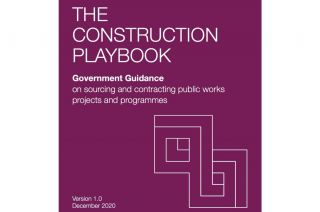
www.buildingsandcities.org/insights/commentaries/zero-carbon-brazil.html
Zero Carbon Buildings: A Brazilian Perspective

Simone Barbosa Villa (Federal University of Uberlândia) and Eduardo Grala da Cunha (Federal University of Pelotas) respond to the B&C special issue EDUCATION & TRAINING: MAINSTREAMING ZERO CARBON. Low and zero carbon building in Brazil is currently at the demonstration stage. The focus of the academic community is therefore on raising awareness and standards, rather than implementing changes in education and the curriculum.
In Brazil, the current discussion on zero carbon buildings remains one step behind Europe or North America and is focused on nearly zero energy buildings, considering the operational energy and following the stages of the building life cycle. Dalbem et al (2017), and Pacheco (2014) are examples of research that have this approach.
The thermal performance and energy efficiency standards in Brazil are low when compared to the same parameters in Europe or even in the US. For instance, in the southern region of Brazil, residential buildings experience similar climatic conditions to south of Europe. However, Brazilian regulations and standards allow high thermal transmittance from walls (2.5W/m2K) and roofs (2.3W/m2K). The thermal performance standard (Associação Brasileira de Normas Técnicas, 2013 - NBR 15575) does not create a situation where the nearly zero energy building is a reality.
However, Brazil has a very special characteristic: a spectacular quantity of solar radiation that produces enough energy to supply a typical residential building with only a few m2 of PV modules. The existing Brazilian energy mix is 74.5% renewable and clean sources (BEN, 2020). Given this situation, the construction industry lacks interest in zero-carbon buildings. So how could Brazil reach zero carbon buildings if its buildings are so far from energy efficiency and satisfactory thermal performance?
The country has two huge challenges. First, the demand for energy-efficient homes from end users is not clear. Buyers do not actively ask the supply side for energy efficiency, thermal performance, thermal comfort and reduced environmental impacts. The situation in Brazil's southern region reveals several problems with housing quality: lack of window airtightness, mould growth, low indoor temperatures. The acceptance of these problems inhibits the improvement of both construction quality and the building stock. There is also inertia in the construction supply side toward any improvement because they can sell whatever they produce.
Thus, the country has a thermal performance standard that defines a low-quality envelope without any concern for airtightness, thermal bridges, quality of windows and building thermal insulation.
In the sphere of public policy, a few actions have been taken to reduce carbon emissions. Among these initiatives are the approval of Law 10.295, in 2001 (Brasil, 2001), representing a milestone by establishing the national conservation policy and rational energy use. In 2013, the Performance Standard ABNT NBR 15575 (Associação Brasileira de Normas Técnicas, 2013), proposed a new approach to specification and building design including lifecycle, performance, efficiency, sustainability and maintenance of buildings (Dall'agnol et al, 2018). This is yet to be implmented. In 2019 the governmental state company Eletrobrás made a public call entitled Procel Edifica - NZEB Brasil.
Universities and research centres are moving the agenda forward by raising awareness about the energy efficiency of buildings in different social, cultural, economic and environmental contexts. Numerous research projects have broadened the understanding of the problems and offered practical solutions. Research institutions have been producing databases, technical standards and guides and even prototypes of complete systems or subsystems demonstrating the viability of energy efficient housing for the Brazilian context. Some of these noteworthy labs are: Laboratory of Energy Efficiency in Buildings at the Federal University of Santa Catarina, the Laboratory of Environmental Comfort and Energy Efficiency in the Built Environment at the Federal University of Minas Gerais, the Laboratory for the Inspection of Energy Efficiency in Buildings at the Federal University of Pelotas, the Energy Conservation and Energy Efficiency Laboratory at Fluminense Federal University, the Laboratory of Environmental Control and Energy Efficiency at the University of Brasília, among other research groups distributed throughout the national territory.
The path to the zero carbon agenda in Brazil relies on education and research. This occurs at the individual initiative of professors or research groups as there is no mandate from government or the professions on education and training. The advances include the direct and indirect training of undergraduate and graduate students, in addition to the provision of training for professionals in the field.
One unique feature of some Brazilian research groups is the inclusion of a wide range of students in all stages of research. Unlike many other countries, in Brazil there is frequent participation of secondary school, undergraduate, master's, doctorate and post-doc students. This collaborative network of different levels of knowledge works as a kind of complementary and continuous training for students and researchers, where activities and functions are organized according to the skills of each member and their level of knowledge. These teams involve undergraduate and graduate students directly in their funded research work, and have produced research of an exceptionally high standard. Equally important is their role in facilitating the wider social dissemination of environmental literacy and a social demand to act on urgent environmental and climatic issues.
In this scenario, the [MORA] Housing Research center in the Faculty of Architecture, Urbanism and Design at the Federal University of Uberlândia stands out. Different levels of students, researchers and professors participate in its projects which cover architecture, design, geography and computer science. MORA's mission includes the improvement of the environmental quality of Brazilian housing, strenghtening the ties between academia and practice, as well as providing a collaborative space for training researchers. Key research concerns involve spatial and environmental quality, sustainability, resilience, SDG goals, technological innovations, post-occupation evaluation and co-production. Since 2016 the group has been conducting research funded by the Brazilian and British government focusing on the resilience of social housing and addressing the SDG goals in the Brazilian scenario, in partnership with international institutions such as the University of Sheffield.
These practises, represented by educational and research standards, are also driving changes in university curricula, bringing new insights and disciplines to the field of zero carbon buildings and, therefore, new skills for students and teachers. In Brazil, the mandatory curricula for architecture courses are established by the Curricular Guidelines of the Brazilian Ministry of Education and the current version was implemented in 2010. This guideline for pedagogical projects and the minimum mandatory content of the subjects does not specifically include actions for zero carbon, but recommends content about the sustainability of the built environment. For example, architectural courses should provide knowledge on the protection of the natural environment and the rational use of natural resources. It also recommends providing students with an understanding of the issues involving the preservation of the landscape and assessing environmental impacts, as well as the associated appropriate skills (climatic, acoustic, lighting, energy conditions, etc) for achieving these goals.
We believe that these initiatives in education and research have promoted fertile conditons for creating the harmonious relationships between the built environment and the natural environment, as well as the multivariate environmental concerns in our climatic and cultural context. Although Brazil does not have a regulatory framework for zero carbon, education is providing a leading role that will help to make the country more prepared to face such challenges.
References
Associação Brasileira de Normas Técnicas (2013) NBR 15575: Edificações Habitacionais - Desempenho. Rio de Janeiro: ABNT. https://www.abntcatalogo.com.br/pub.aspx?ID=337
BEN - Balanço Energético Nacional (2020). Relatório Síntese: Ano Base 2019. Empresa de Pesquisa Energética (EPE), Ministério de Minas e Energia. Rio de Janeiro. https://www.epe.gov.br/sites-pt/publicacoes-dados-abertos/publicacoes/PublicacoesArquivos/publicacao-479/topico-521/Relato%CC%81rio%20Si%CC%81ntese%20BEN%202020-ab%202019_Final.pdf
Brasil (2001). LEI No 10.295, 17 de outubro de 2001. Política Nacional de Conservação e Uso Racional de Energia. Presidência da república - Casa Civil. http://www.planalto.gov.br/ccivil_03/leis/leis_2001/l10295.htm
Dalbem, Renata et al (2017). Discussão do desempenho da envoltória de uma passive house adaptada à zona bioclimática 2 em acordo com o RTQ-R. Ambiente Construdo [online], 17(1), pp.201-222. https://doi.org/10.1590/s1678-86212017000100132.
Dall'agnol et al (2018). Acelerando a eficiência das edificações no Brasil: ações prioritárias para líderes urbanos. Working Paper. Porto Alegre, Brasil: WRI Brasil. https://wribrasil.org.br/sites/default/files/EficienciaEdificacoes_pub.pdf
Pacheco, Miguel Teixeira Gomes (2014). Ventilação natural e climatização artificial: crítica ao modelo superisolado para residência de energia zero em Belém e Curitiba. PhD thesis. Universidade Federal de Santa Catarina, Centro Tecnológico. Programa de Pós-Graduação em Engenharia Civil. https://labeee.ufsc.br/sites/default/files/publicacoes/teses/tese_MiguelPacheco.pdf
Latest Peer-Reviewed Journal Content
Acceptability of sufficiency consumption policies by Finnish households
E Nuorivaara & S Ahvenharju
Key factors for revitalising heritage buildings through adaptive reuse
É Savoie, J P Sapinski & A-M Laroche
Cooler streets for a cycleable city: assessing policy alignment
C Tang & J Bush
Understanding the embodied carbon credentials of modern methods of construction
R O'Hegarty, A McCarthy, J O'Hagan, T Thanapornpakornsin, S Raffoul & O Kinnane
The changing typology of urban apartment buildings in Aurinkolahti
S Meriläinen & A Tervo
Embodied climate impacts in urban development: a neighbourhood case study
S Sjökvist, N Francart, M Balouktsi & H Birgisdottir
Environmental effects of urban wind energy harvesting: a review
I Tsionas, M laguno-Munitxa & A Stephan
Office environment and employee differences by company health management certification
S Arata, M Sugiuchi, T Ikaga, Y Shiraishi, T Hayashi, S Ando & S Kawakubo
Spatiotemporal evaluation of embodied carbon in urban residential development
I Talvitie, A Amiri & S Junnila
Energy sufficiency in buildings and cities: current research, future directions [editorial]
M Sahakian, T Fawcett & S Darby
Sufficiency, consumption patterns and limits: a survey of French households
J Bouillet & C Grandclément
Health inequalities and indoor environments: research challenges and priorities [editorial]
M Ucci & A Mavrogianni
Operationalising energy sufficiency for low-carbon built environments in urbanising India
A B Lall & G Sethi
Promoting practices of sufficiency: reprogramming resource-intensive material arrangements
T H Christensen, L K Aagaard, A K Juvik, C Samson & K Gram-Hanssen
Culture change in the UK construction industry: an anthropological perspective
I Tellam
Are people willing to share living space? Household preferences in Finland
E Ruokamo, E Kylkilahti, M Lettenmeier & A Toppinen
Towards urban LCA: examining densification alternatives for a residential neighbourhood
M Moisio, E Salmio, T Kaasalainen, S Huuhka, A Räsänen, J Lahdensivu, M Leppänen & P Kuula
A population-level framework to estimate unequal exposure to indoor heat and air pollution
R Cole, C H Simpson, L Ferguson, P Symonds, J Taylor, C Heaviside, P Murage, H L Macintyre, S Hajat, A Mavrogianni & M Davies
Finnish glazed balconies: residents' experience, wellbeing and use
L Jegard, R Castaño-Rosa, S Kilpeläinen & S Pelsmakers
Modelling Nigerian residential dwellings: bottom-up approach and scenario analysis
C C Nwagwu, S Akin & E G Hertwich
Mapping municipal land policies: applications of flexible zoning for densification
V Götze, J-D Gerber & M Jehling
Energy sufficiency and recognition justice: a study of household consumption
A Guilbert
Linking housing, socio-demographic, environmental and mental health data at scale
P Symonds, C H Simpson, G Petrou, L Ferguson, A Mavrogianni & M Davies
Measuring health inequities due to housing characteristics
K Govertsen & M Kane
Provide or prevent? Exploring sufficiency imaginaries within Danish systems of provision
L K Aagaard & T H Christensen
Imagining sufficiency through collective changes as satisfiers
O Moynat & M Sahakian
US urban land-use reform: a strategy for energy sufficiency
Z M Subin, J Lombardi, R Muralidharan, J Korn, J Malik, T Pullen, M Wei & T Hong
Mapping supply chains for energy retrofit
F Wade & Y Han
Operationalising building-related energy sufficiency measures in SMEs
I Fouiteh, J D Cabrera Santelices, A Susini & M K Patel
Promoting neighbourhood sharing: infrastructures of convenience and community
A Huber, H Heinrichs & M Jaeger-Erben
New insights into thermal comfort sufficiency in dwellings
G van Moeseke, D de Grave, A Anciaux, J Sobczak & G Wallenborn
'Rightsize': a housing design game for spatial and energy sufficiency
P Graham, P Nourian, E Warwick & M Gath-Morad
Implementing housing policies for a sufficient lifestyle
M Bagheri, L Roth, L Siebke, C Rohde & H-J Linke
The jobs of climate adaptation
T Denham, L Rickards & O Ajulo
Structural barriers to sufficiency: the contribution of research on elites
M Koch, K Emilsson, J Lee & H Johansson
Disrupting the imaginaries of urban action to deliver just adaptation [editorial]
V Castán-Broto, M Olazabal & G Ziervogel
Nature for resilience reconfigured: global- to-local translation of frames in Africa
K Rochell, H Bulkeley & H Runhaar
How hegemonic discourses of sustainability influence urban climate action
V Castán Broto, L Westman & P Huang
Fabric first: is it still the right approach?
N Eyre, T Fawcett, M Topouzi, G Killip, T Oreszczyn, K Jenkinson & J Rosenow
Social value of the built environment [editorial]
F Samuel & K Watson
Understanding demolition [editorial]
S Huuhka
Data politics in the built environment [editorial]
A Karvonen & T Hargreaves



Latest Commentaries
Decolonising Cities: The Role of Street Naming
During colonialisation, street names were drawn from historical and societal contexts of the colonisers. Street nomenclature deployed by colonial administrators has a role in legitimising historical narratives and decentring local languages, cultures and heritage. Buyana Kareem examines street renaming as an important element of decolonisation.
Integrating Nature into Cities
Increasing vegetation and green and blue spaces in cities can support both climate change mitigation and adaptation goals, while also enhancing biodiversity and ecological health. Maibritt Pedersen Zari (Auckland University of Technology) explains why nature-based solutions (NbS) must be a vital part of urban planning and design.